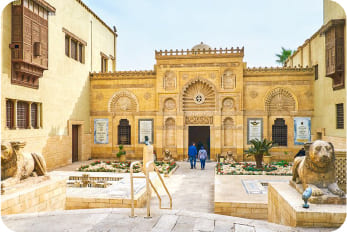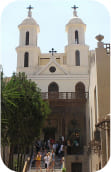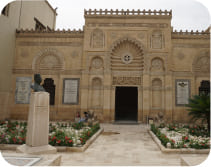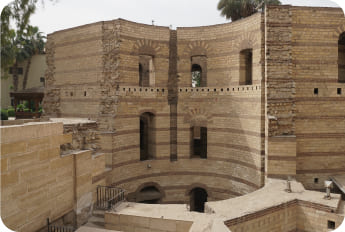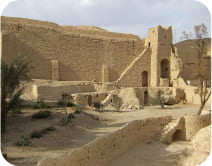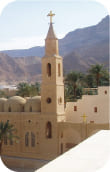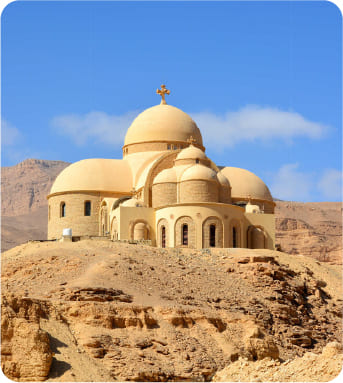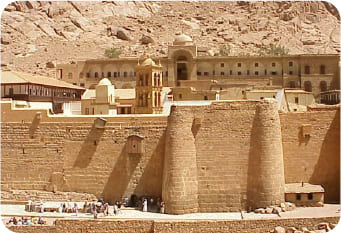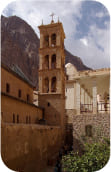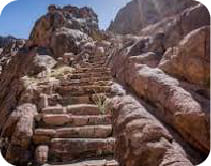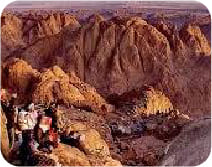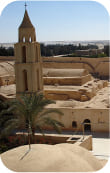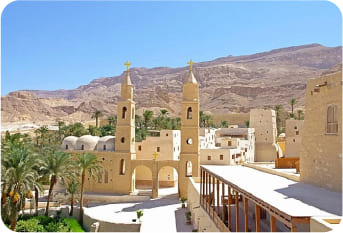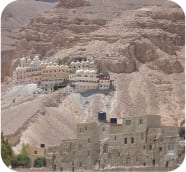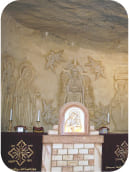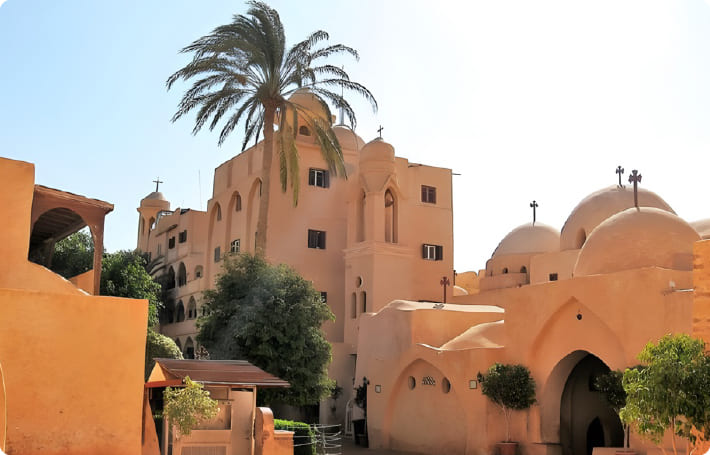


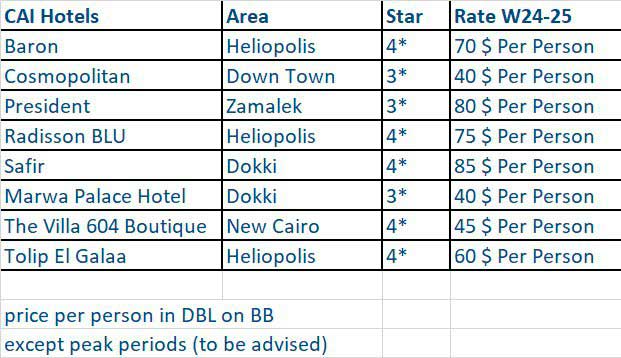


Minimum group size: 10-16 people (3-star hotels)

Tour price: from 550$ per person* *with accommodation in a DBL room
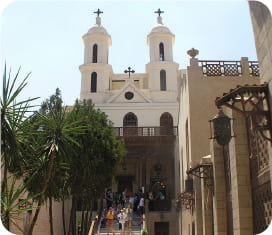
Old Cairo
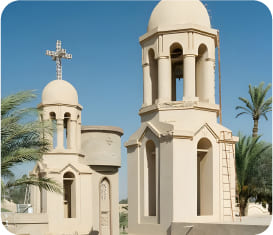
Monastery of Saint Macarius
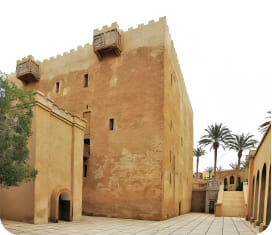
Roman Monastery
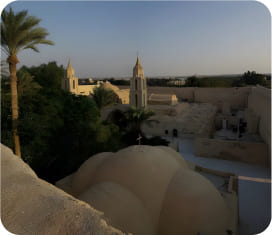
Syrian Monastery

Monastery of Saint Bishoy
Arrival in Cairo (preferably in the first half of the day).
Accommodation in a 3-star hotel. Free time.
Breakfast at the hotel.
City tour of Cairo. Visit to Old Cairo and its famous churches, exploring the significant spiritual centers of the Egyptian capital.
Excursion to Wadi El Natrun, a valley with 10 alkaline lakes located in northern Egypt, between Cairo and Alexandria. The substance used by the ancient Egyptians for mummification was once extracted from these local waters.
In Christian literature, this region is referred to as the Nitrian Desert. It was here, in one of the local monasteries dedicated to Saint Mary, that the Nitrian Codex palimpsest was discovered in 1842, which, among other things, includes the Gospel of Saint Luke.
Of the approximately 50 ancient Christian Coptic monasteries that once operated here, only 4 have survived to the present day.
Monastery of Saint Macarius (Deir Abu Makar) founded in the 4th century. This is the largest and most significant Coptic monastery in Wadi El Natrun. The monastery is built like a fortress, surrounded by defensive walls that were built in 866 AD. After spending many years in the Monastery of Saint Anthony in the Arabian Desert, Saint Macarius settled in Wadi El Natrun, where he established this monastery. After his death in 390 AD, his disciples remained here. The relics of Saint Macarius are preserved in the monastery.
Roman Monastery (Deir el-Baramus) renowned for its Church of Saint Theodore, which is no longer in use. Its three-story tower dates back to the 7th century. The monastery's second church, dedicated to Saint Michael, is adorned with 12th-century frescoes.
Syrian Monastery (Deir es-Suriani) founded in the 6th century. It was managed by Syrian monks until the 16th century. The main church of the monastery was built in 980 AD. The highlights of its interior are the frescoes depicting the Resurrection of Christ, an ivory iconostasis, and a painted dome.
Monastery of Saint Bishoy (Deir Anba Bishoi), located 10 km from Deir Abu Makar, was founded by a disciple of Saint Macarius. This monastery contains five churches.
Overnight stay at a hotel in Cairo.
Breakfast at the hotel.
Early morning departure to the Monasteries of Saint Anthony and Saint Paul.
The area of the Monastery of Saint Anthony includes a church, gardens, and residential quarters. The entrance is through double arched gates located between towers topped with crosses. The monastery resembles a village enclosed by a wall. For a time, it was uninhabited, but after Shenouda III, the head of the Coptic Church, ascended to the throne in 1971, all the monasteries in Egypt became active again. In the 1970s, only 4 monks lived here, but today the number has grown to over 80. For the first time in its history, the monastery expanded its land to accommodate everyone.
The Monastery of Saint Paul was built near the cave where he lived for about 90 years. Paul the Hermit was born in Alexandria into a wealthy family, but at the age of 16, he left to escape Roman persecution. In the Cave of Saint Paul, there is the Church of Saint Paul, altars, candelabras, icons, and a sarcophagus that is believed to contain the relics of the saint. Ostrich eggs are also kept here, symbolizing the resurrection of Jesus Christ. However, there is another theory that they were attached to the chains of oil lamps hanging from the chapel ceiling to prevent rats from entering. The Monastery of Saint Paul also houses a church built in the 17th century, where an icon of the Virgin Mary, painted from life, can be seen. Outside the monastery gates, there is an old oil press and a pulley system that was once used to transport visitors and food over the wall during times of unrest. Dinner at the monastery guesthouse.
Overnight stay at the monastery guesthouse.
Breakfast at the hotel.
Early morning departure to the Monastery of Saint Catherine.
Dinner at the monastery hotel.
Overnight stay at the Monastery of Saint Catherine hotel.
Breakfast at the hotel.
Visit to the Monastery of Saint Catherine, which features a large church adorned with mosaics and marble that have inspired awe for centuries in all who have had the privilege of visiting it. This is the Basilica of the Transfiguration. Behind its altar there is one of the oldest monastery buildings, dating back to the 4th century. The chapel is dedicated to the Annunciation of the Virgin Mary.
Pilgrims enter the holy place without shoes, remembering God's command given to Moses, "Take off your sandals, for the place where you are standing is holy ground." Each Orthodox pilgrim receives a silver ring with a heart design and the monogram "K" from a hieromonk of the Monastery of Saint Catherine.
The holy altar is situated above the roots of the Burning Bush, and the bush itself has been transplanted behind the walls of the church. This is the only bush of its kind in South Sinai, and no attempts to plant its cuttings elsewhere have been successful. In addition to the main church, the Monastery of Saint Catherine has 12 chapels, a garden, a refectory, and a vast manuscript library, which is considered second in value only to the Vatican’s. For centuries, South Sinai has remained one of the world's religious centers.
The service at the monastery begins at four in the morning and concludes by eight. At twelve o’clock, the hours are read, and the relics of Saint Catherine, her head and hand, are brought out for veneration.
The Monastery of Saint Catherine is a unique religious monument, a pilgrimage site for Christians from around the world. It is one of the oldest Christian monasteries with an unbroken history of operation.
Dinner at the monastery hotel.
At night, the group will ascend Mount Sinai (Mount Moses).
Sinai is the place where God revealed Himself to the prophet Moses. Mount Sinai (or Mount Moses) rises in the southern part of the Sinai Peninsula in Egypt. Every day, many pilgrims and travelers, regardless of their affiliation with Christianity, Judaism, or other world religions, climb to an altitude of over 2,000 meters. According to tradition, anyone who witnesses the sunrise on the mountain and prays sincerely to God will have all their sins forgiven.
The ascent takes approximately three hours.
Greeting the sunrise on Mount Moses.
Early breakfast at the monastery hotel and departure to Cairo.
Overnight stay at a hotel in Cairo.
Breakfast at the hotel.
Free time for a final stroll around the Egyptian capital.
Departure home.
